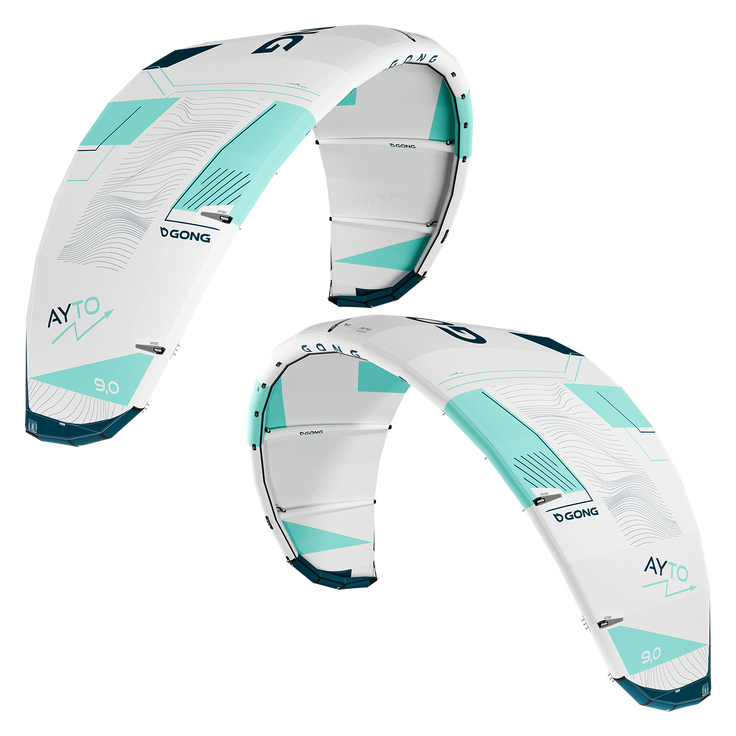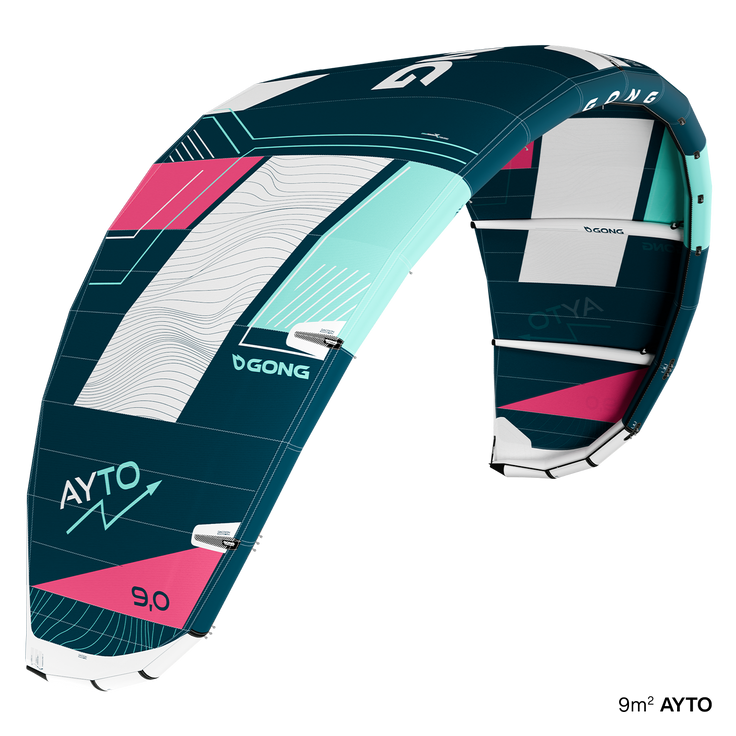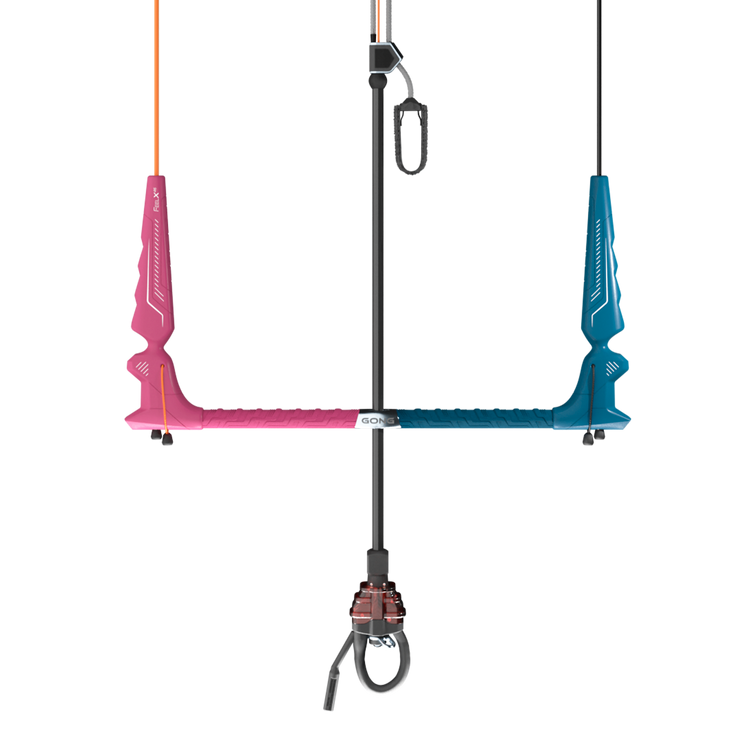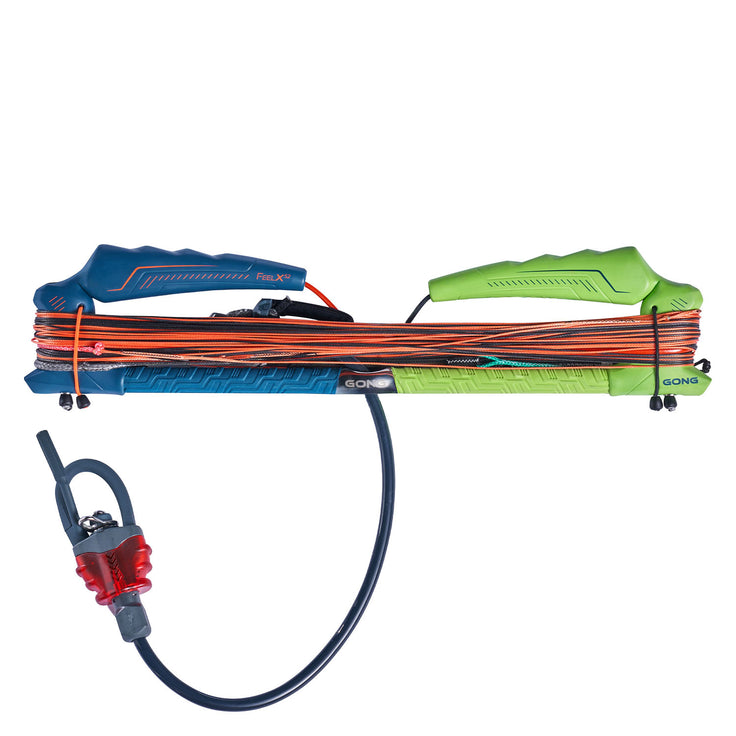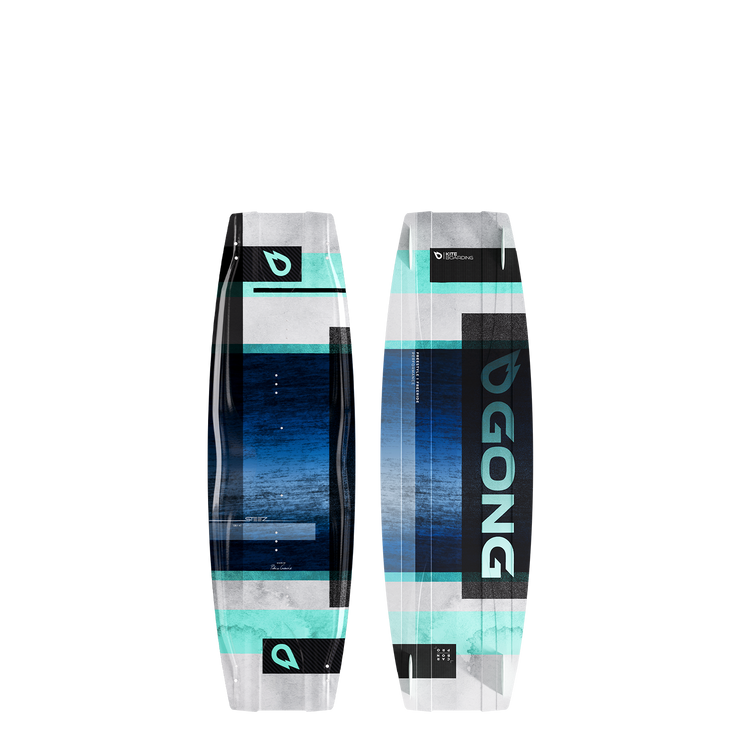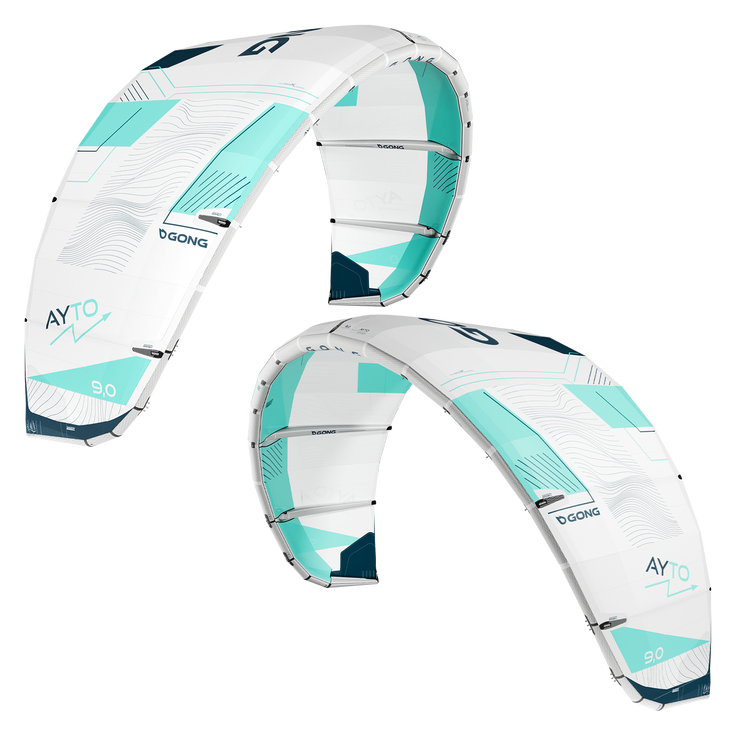FEEDBACK: PERF SERIES AYTO
- News
- Kite
- Kite foil
20 years of experience in 20 knots of wind for an in-depth review of our Big Air / Freestyle kite to send it!

Rider, gear and conditions
“KITE Ambassador Tour
Kite: GONG 9m Perf Series Ayto
Rider: 1,72 m, 75 kg
Board: GONG Steez Carbon Pro 136
I've been kitesurfing for 20 years, with a preference for big air on a twin tip starting from 15 knots. Now, I switch to foiling when the wind drops below 15 knots.
So … I loved this 9m.
All my sessions had jumps between 10 and 12 meters high on the WOO (not at King of the Air level, though).”
A 5-strut kite designed for freestyle
“The Ayto is different from the Vertigo I tested, which is similar to the Freewave or the Draw I’ve used in the past. No surprise, as they’re all three-strut kites.
Finally, a five-strut freestyle kite in the GONG range. I’ve been waiting for this for years!
The Ayto impressed me with its performance. Unlike other five-strut kites from other brands that I've used, it doesn’t falter or deform in gusty winds. It’s super rigid in the air. It doesn't luff or bounce in the window either when the wind is gusty and inconsistent.
It's very responsive in handling; when you oversheet, you don't really feel it, and you don’t notice it moving back in the window. Everything stays stable. This might be challenging for a beginner to grasp.
As I've read in other reviews, it feels light on the bar but pulls a lot on the harness. Since mine is rigid, it doesn’t bother me too much—except for one session when I had it poorly adjusted. I had to stop after 45 minutes because my ribs were sore!
In terms of jumping, it’s fantastic. You get a boost and don’t even realize how high you’ve gone. On the way down, I find it glides for a long time, which is great!
Kiteloops are effortless with this kite. However, I haven’t tried them in big air yet.”
A kite that you can fine-tune with adjustments.
“All of its characteristics can be accentuated or diminished depending on the tuning of the bridle. Let me explain:
At first, I had the factory settings, with the back lines on the middle knots on the pigtail and the front bridle in the middle as well.
The kite has a slight delay when you pull on the bar. You need to keep carving after launching the kite for the jump to build tension in the lines.
On the way down, it glides for a loooong time……………
In the next session, I moved the back lines to the outer pigtails for quicker turns and adjusted the front bridle to the attack edge in the ++ speed position.
The kite feels more direct with the bar this time. You can let go of the carving and pop almost simultaneously with sending the kite. However, it seems like the kite has a little less lift.
I think we can further refine the sensations by adjusting the positions of the front bridle knots.
On the downside, I had a bit of trouble adjusting the front bridle knots because they are covered with a small piece of plastic that’s hard to loosen. It took me 10 minutes to adjust all four on the beach with over 20 knots of wind. However, it definitely helps to limit wear.”
Conclusion
“In conclusion, I’m impressed with this kite, which stands out against other brands on the market (not to mention kites made from aluula or SLS, etc.).
It’s perfect for its intended use—big air freestyle. Seeing what this Ayto can do, I dream of testing it in DP Aramid. I can’t even imagine the performance!








